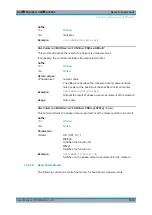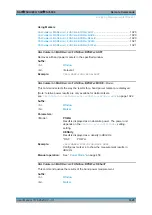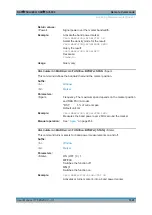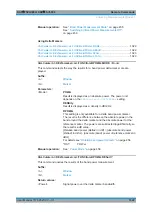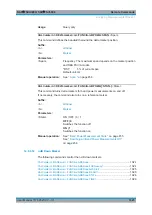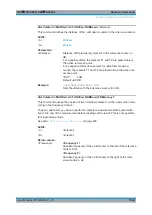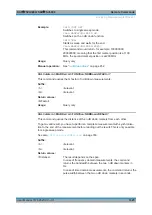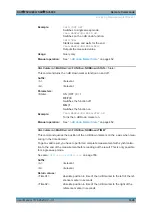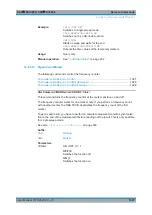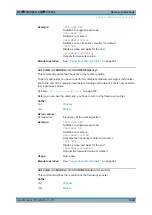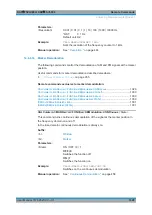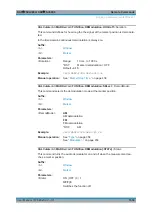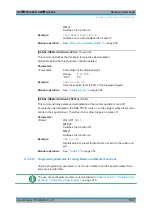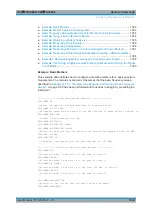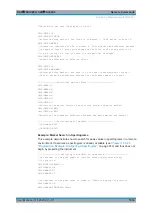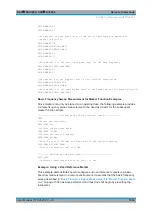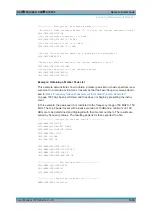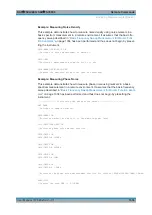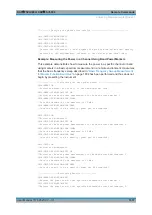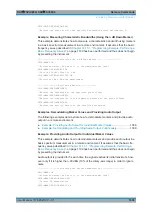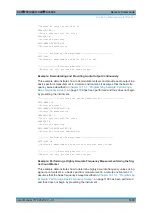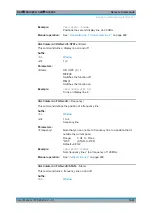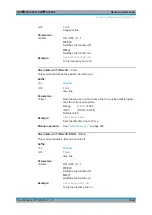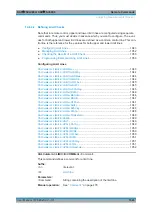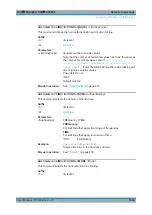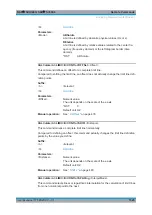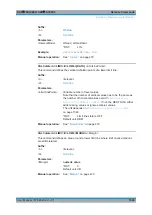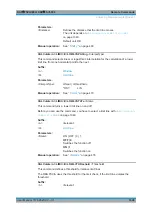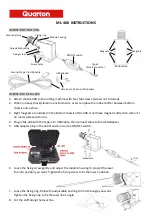
Remote Commands
R&S
®
FSVA3000/ R&S
®
FSV3000
1033
User Manual 1178.8520.02 ─ 01
//Moves M2 to the next lower peak of trace 2.
CALC:DELT5 ON
CALC:DELT5:LINK ON
//Activates delta marker 5 and links it to marker 1. If M1 moves, so does D5.
CALC:DELT5:MREF 4
//Changes the reference for D5 to marker 4. D5 now shows the difference between
//the peak of trace 1 after each sweep and the value at the same position in
//trace 4, which is a copy of trace 1, averaged over 10 sweeps.
CALC:DELT5:MODE REL
//Shows the difference as relative values.
CALC:DELT6 ON
CALC:DELT6:MAX:NEXT
//Activates delta marker 6 and sets it to the next lower maximum of trace 1.
//Thus it shows the difference between the two highest peaks in trace 1.
//--------------Retrieving marker values ---------------------
CALC:MARK1:Y?
CALC:MARK2:Y?
CALC:MARK3:Y?
CALC:MARK4:Y?
CALC:DELT5:Y?
CALC:DELT6:Y?
//Retrieves the marker levels of each active normal and delta marker.
CALC:DELT5:X:REL?
CALC:DELT6:X:REL?
//Retrieves the frequency difference between the delta marker and marker 1.
//--------------Deactivating all markers ---------------------
//CALC:MARK:AOFF
//CALC:DELT:AOFF
Example: Marker Search in Spectrograms
This example demonstrates how to search for peak values in spectrograms in a remote
environment. It assumes a spectrogram is already available (see
"Programming Example: Configuring a Spectrogram"
on page 979) and thus does not
begin by presetting the instrument.
//---------------- Analyzing the results using markers -------------------
//Set marker1 on the peak power in the most recent spectrum and query
//its position
CALC2:SPEC:FRAM:SEL 0
CALC2:MARK1 ON
CALC2:MARK1:X?
CALC2:MARK1:Y?
//Set marker2 on the peak power in frame at -324ms and query its position
CALC2:MARK2 ON
CALC2:MARK2:SGR:FRAM -324ms
Analyzing Measurements (Basics)

